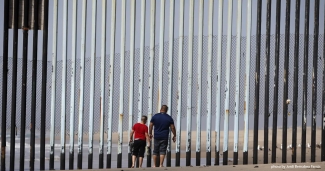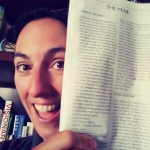The US-Mexico Border Then and Now, with Timothy Dunn

(This image is licensed under: https://creativecommons.org/licenses/by/2.0/legalcode)
“Historically, we’re nowhere near the levels we were, at the turn of the century,” noted Timothy Dunn, Professor of Sociology at Salisbury University and noted scholar on immigration enforcement along the US-Mexico border. Dunn is referring to Border Patrol apprehensions, a topic widely covered in recent weeks in the news with hyperbolic fervor. Just twenty years ago, Dunn says, “Border Patrol was apprehending about a million and a half, or more, people per year – routinely over a million.” In more recent years, the number has been halved, with roughly 500,000 apprehensions per year. “Now we have this uptick, but when [the media or political figures] say it’s unprecedented, that’s absolutely wrong,” he emphasized.
A more accurate picture of migration, of course, is not simply the number of apprehensions, but also visas and who is coming. Dunn notes that apprehensions have dropped in large part of over the past 15 years because the number of temporary work visas, like H2As, granted by the US government for Mexican workers, has tremendously expanded (quadrupling from 2006 to 2017, to some 906,000). This has greatly reduced unauthorized migration by Mexicans, long the overwhelming majority of unauthorized migrants. Since 2014, the border has seen large influxes of unaccompanied minors, and families with young children, mostly from Central America, who cross the border and seek Border Patrol officers in order to ask for asylum. Their primary concern is safety, from political and gang violence. Thus, to insinuate that an influx of families to the border within the past year is unprecedented, is false, Dunn says: “Remember back in 2014 when we had a large influx of unaccompanied minors? It’s been a key feature ever since.”
Meanwhile, Dunn notes, two-thirds of the 10 to 11 million residents in the US who lack authorization to live and work here have, on average, lived here for more than a decade, often more than 15 years, establishing families and growing roots in their communities. Contrary to the political talking point, immigrants – both those without authorization and those with residency status – commit crimes at lower rates than native-born people. This picture presents a vastly more complex and colorful immigration landscape, where immigrants without authorization live and work and participate in communities around the country and often live in mixed-immigration status households, with varying legal statuses. Many Americans, Dunn says, recognize the complexity; recent polls continue to indicate that a “path to citizenship” for the “dreamers” and unauthorized immigrants is supported by a vast majority of the public.
Dunn says that, while President Trump’s rhetoric may be unprecedented in its tone and content, President Trump’s immigration strategy of prevention through aggressive deterrence largely mimics the policies of previous presidents since the early 90s and through President Obama -- although Trump’s take on the policy has taken it to new and cruel levels. An example of President Trump’s furtherance of the policy of deterrence was last year’s largely criticized and unpopular family separation policy, which separated thousands of children from their parents until a US district judge issued an injunction (although newer reports indicate that families continue to be separated).
Under this decades-long policy of deterrence, Border Patrol budgets and staffing have greatly increased, both doubling since 2004. In turn, until recently, overall Border Patrol workloads were low, and per-officer apprehensions have gone down -- as a larger staff dealt with historically low apprehensions for the past decade, until the past six months. Thus, Dunn argues, the idea that Border Patrol lacks sufficient resources for the current influx of Central American refugees is false. The agency has ample resources, he says, but it needs to reallocate them to areas of greatest need, such as El Paso and the Lower Rio Grande Valley, and adjust to the fact that years of slow times and low workloads are over for the time being. And, he added, “they need to spend more of their resources on appropriately handling children and families.”
Trump’s increasing reliance on deterrence is particularly evident in detention. “Obama housed 16,000 [migrant families and unaccompanied minors] on military bases over a five-year period, but never more than 500 at any one time,” Dunn said. “Trump is talking about [detaining] 20,000 at once. That would be the biggest incarceration since the Marielitos,” he said, referring to a boatlift of 135,000 Cubans in 1980. Dunn is concerned about the current approach for unaccompanied minors, which he fears routinely violates the Flores settlement, a court-ordered limit of 20 days for children in detention, as a result of the mental health repercussions of longer terms of detention. In the notorious Tornillo, Texas tent-city facility for minors (which was closed in December, with the detained minors sent to south Florida), he says, the average stay for minors was more than three months. President Trump, he noted, has publicly stated that he wants the Flores settlement removed.
While attention has hovered on apprehensions and crossings, many reports have overlooked the real crises in immigrants’ homelands, where, in addition to devastating violence and instability, small farmers are now contending with climate change. “We’re starting to see this in Honduras and Guatemala, from the so-called ‘dry corridor’ where peasant agriculture is not getting the rainfall they’re used to, and that’s one of the big driving factors of this recent wave,” Dunn said. “A lot of people coming from the Western Highlands haven’t gotten crops for a couple of years -- and aren’t getting support from their governments.”
“Worsening climate conditions combined with US trade policies that have undermined small producers for decades, US support for repressive, often corrupt security forces, and deportations of gang members -- leading to more violent crime -- have created increasing conditions of hardship that further stimulate ‘push’ factors for migration to the US,” Dunn said. “The US government should address those push conditions if it wants to reduce migration from the region.” As Dunn demonstrated repeatedly, the picture is difficult to discern -- and likely to become even more complex in the future.
Like what you see? Amplify our collective voice with a contribution.
Got some good news to share? Contact us on our social media pages above.
Return to the main blog page or sign up for blog updates here.
- Log in to post comments






